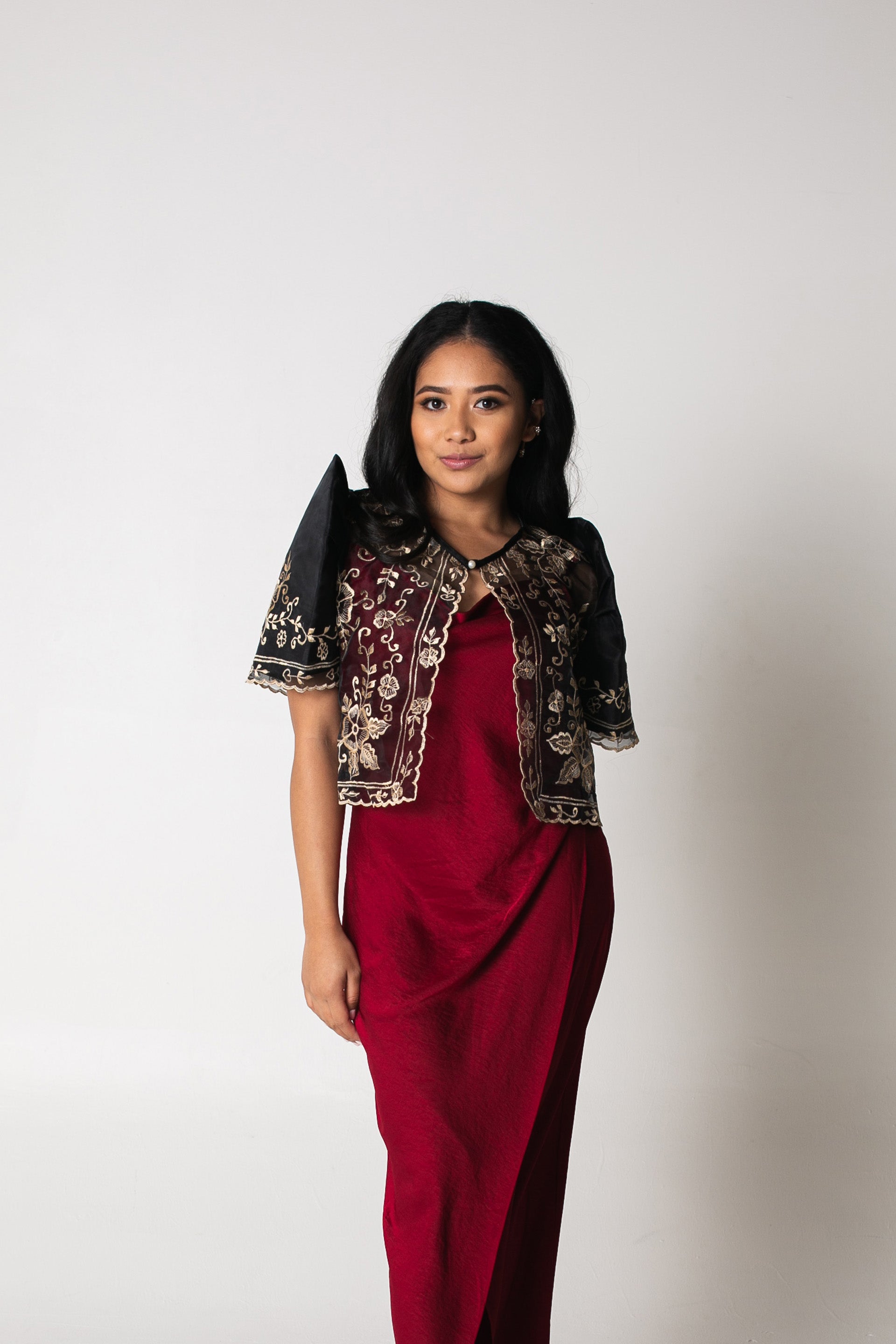The fashion industry has witnessed many trends and styles that have come and gone. However, some trends have stood the test of time and have maintained relevance through different eras. One such trend is the Bolero Jacket, a timeless piece of clothing that has existed for centuries. This article explores the history and evolution of the bolero jacket, with a particular focus on the Filipiniana version.
Definition of Bolero Jacket
A bolero jacket is a short, waist-length jacket with long sleeves and an open front. It is usually made from lightweight fabrics such as silk, lace, or chiffon and is often adorned with intricate embroidery or beadwork. The bolero jacket is versatile and can be worn with various outfits, from formal evening gowns to casual jeans and t-shirts.
The Origin of the Bolero Jacket
The origin of the Bolero Jacket can be traced back to the 19th century when Spanish bullfighters wore a short jacket called a 'bolero' as part of their traditional costume. The jacket was designed to be lightweight and allowed the bullfighters to move freely while in the arena. Over time, the bolero jacket became popular among women, who began incorporating it into fashionable outfits.
Bolero Jacket Filipiniana
The Bolero Jacket has been a staple of Filipiniana fashion for many years. It is often worn as part of the traditional Filipiniana dress, the national costume of the Philippines. The Filipiniana dress is a formal gown typically made from delicate fabrics such as piña or jusi and features intricate embroidery or beadwork.
The Luisa Mestiza Bolero in Black from Mestiza Filipina is a perfect example of the elegance and sophistication that the Bolero Jacket brings to Filipiniana fashion. The Luisa Mestiza Bolero is made from silk and features intricate hand-embroidered flowers and leaves. They are classic and versatile, making the bolero perfect for any formal occasion, whether a wedding, a debut, or a gala.
The Filipiniana dress and Bolero Jacket have a rich history in the Philippines, dating back to the Spanish colonial era. During this time, the Filipinos adopted Spanish fashion and incorporated it into their traditional clothing. The result was the creation of the Filipiniana dress and the Bolero Jacket, which have become an important part of the country's cultural heritage.
The timeless elegance of the bolero jacket has seen it endure through different eras and trends. In the 1920s, the bolero jacket was a popular accessory for flapper dresses, while in the 1950s, it was often worn with full skirts and petticoats. In recent years, the bolero jacket has made a comeback on the runways of high-end fashion designers, proving that it is a trend that will never go out of style.
Conclusion
The bolero jacket is a timeless piece of clothing that has stood the test of time and will continue for many years. Its elegant design and versatility make it a perfect accessory for formal wear, while it's rich history and cultural significance make it an important part of fashion history. The Luisa Mestiza Bolero in Snow is a perfect tribute to the timeless elegance of the bolero jacket and a must-have for anyone who appreciates classic, sophisticated fashion.
Be the epitome of grace and style with Mestiza Filipina's modern Filipiniana top collection. Let the world know your love for Filipino culture while looking effortlessly chic. Shop now and experience the exceptional quality of Mestiza Filipina.










